First and foremost, you are absolutely invited to go ahead and copy the code in this post into an LLM or your dev environment. Feel free to ask a model about it. If you are looking for a solid, simple and effective way to run workflow agents, LlamaIndex Workflows are great.
From Simple Document Analysis to Intelligent Agent Architecture
Recently, I built a web-based application designed to streamline the process of responding to Request for Proposal (RFP) documents. The goal was straightforward: upload an RFP document, have the application automatically analyze its contents, and generate accurate and timely answers.
What began as a simple document parser evolved into something much more powerful. Let me walk you through this journey and show how LlamaIndex Workflows transformed my application into a sophisticated agent capable of handling complex document processing tasks.
The Evolution: From Basic Indexing to Intelligent Agents
Initially, the application leveraged LlamaIndex for parsing and extracting content from documents. As I became more familiar with the library, I realized its potential went far beyond basic document analysis.
The real breakthrough came when I discovered LlamaIndex's workflow capabilities. By integrating workflows, my simple document processor can evolve into a dynamic agent capable of handling complex scenarios involving multiple document formats, parallel processing, and sophisticated interactions.
Understanding LlamaIndex Workflows
Workflows in LlamaIndex provide a structured approach to managing complex processes through event-driven automation. They enable multiple tasks to run concurrently, coordinate between different components, and maintain state throughout the execution flow.
IMPORTANT: Workflow steps can be branched and used to run interactions with multiple AI’s if you like. You can parallel execute interactions with Grok, OpenAI and Gemini if you like. Or run one branch with a reasoning model while the other uses an everyday 4.x one.
Key Components of LlamaIndex Workflows
- Events: Messages that trigger workflow steps ( StartEvent , StopEvent , custom events)
- Steps: Individual processing units that respond to specific events
- Context: Shared state that carries information between steps
- Workers: Parallel execution units that process events concurrently
Workflows are particularly valuable when building applications that need to:
- Process multiple documents simultaneously
- Coordinate between different AI models or services
- Maintain complex state across multiple interactions
- Scale processing based on available resources
Practical Implementation: Building a Workflow-Based RFP Agent
Let's transform a basic document indexing solution into an intelligent workflow agent. I'll provide complete, executable examples to demonstrate this evolution.
Step 1: Basic Document Indexing (The Starting Point)
First, let's look at how a simple document indexing solution might be implemented:
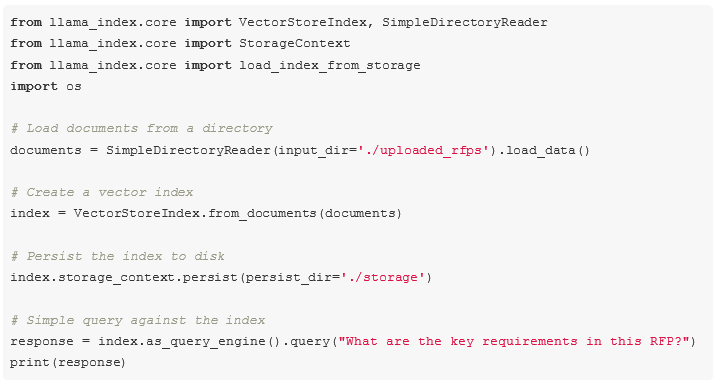
This solution works for basic queries but lacks the sophistication needed for complex RFP analysis.
Step 2: Implementing a Concurrent Workflow Agent
Now, let's transform this into a workflow-based agent that can process multiple sections of an RFP concurrently:
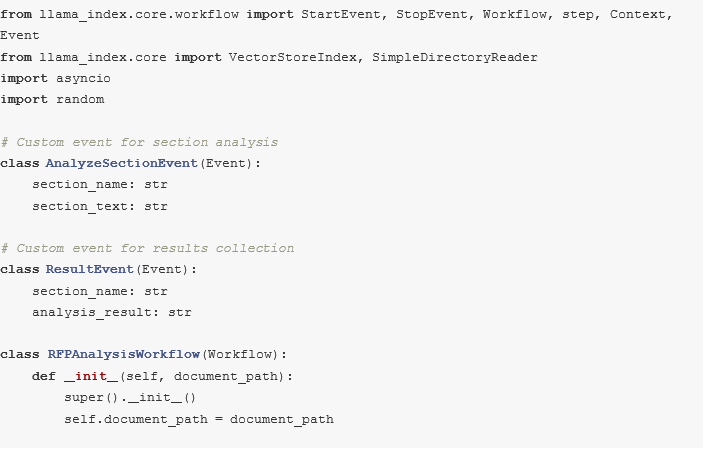
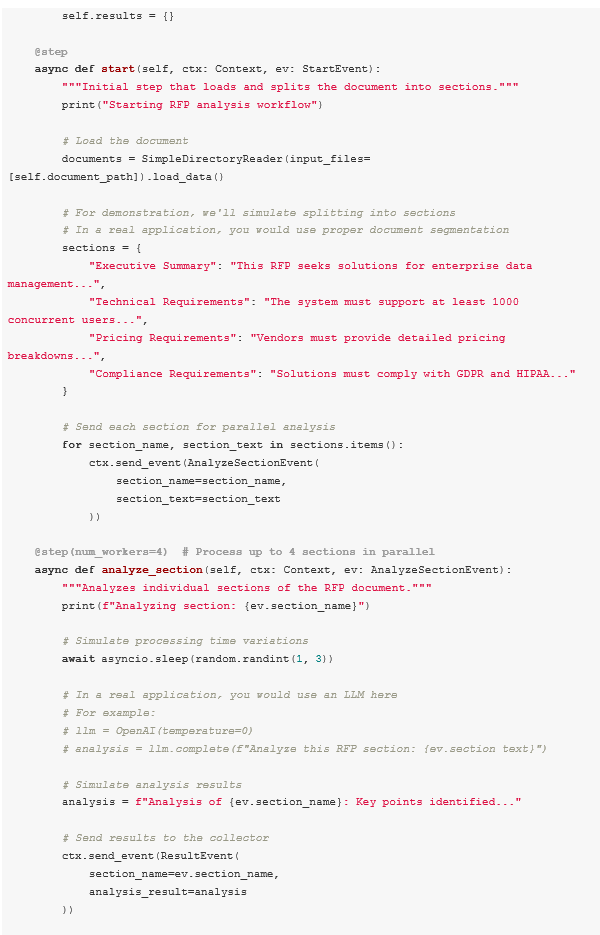
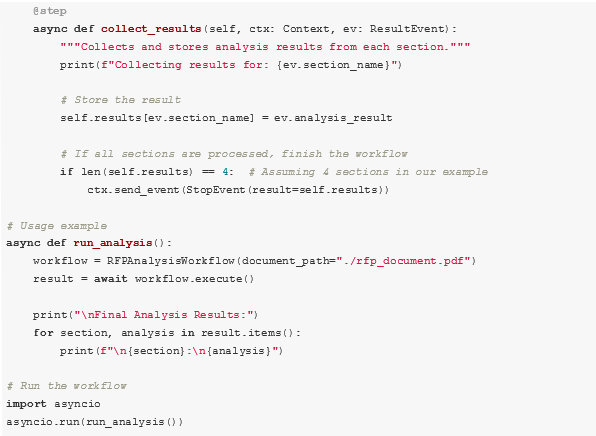
This workflow-based approach provides several advantages:
1. Parallel Processing: Analyzes multiple RFP sections simultaneously
2. Improved Efficiency: Utilizes available computing resources more effectively
3. Structured Flow: Clearly defines the processing stages and data flow
4. Scalability: Easily adapts to handle larger documents or more complex analysis
Step 3: Enhanced Document Storage with Vector Databases
To handle large RFP documents efficiently, we can integrate vector database storage into our workflow:
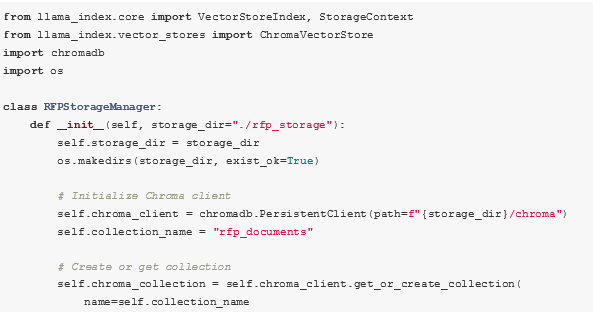
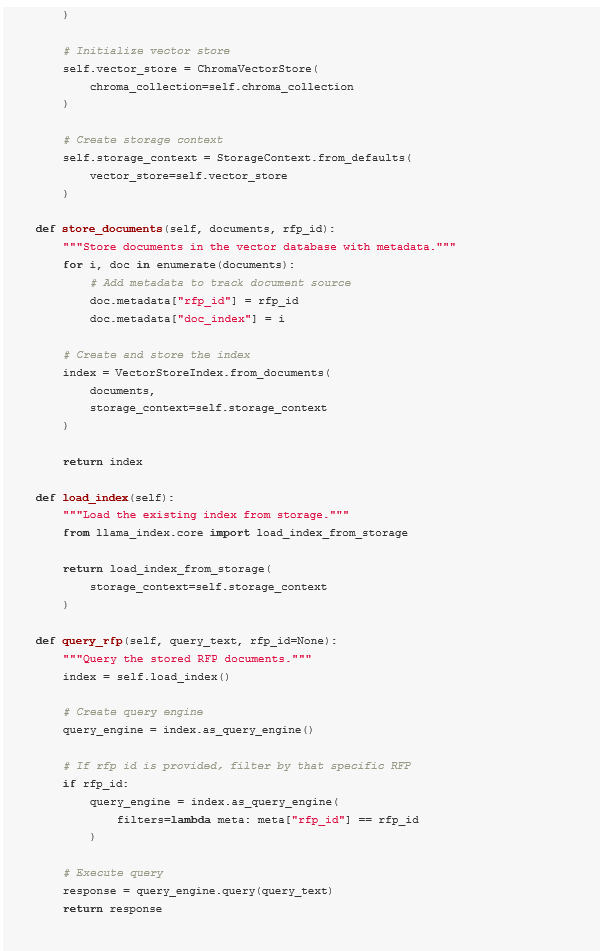
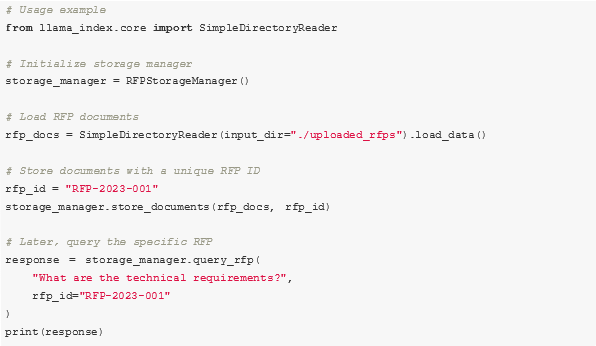
Step 4: Integrating Voice Interaction
Finally, we can enhance our RFP agent by adding voice interaction capabilities:
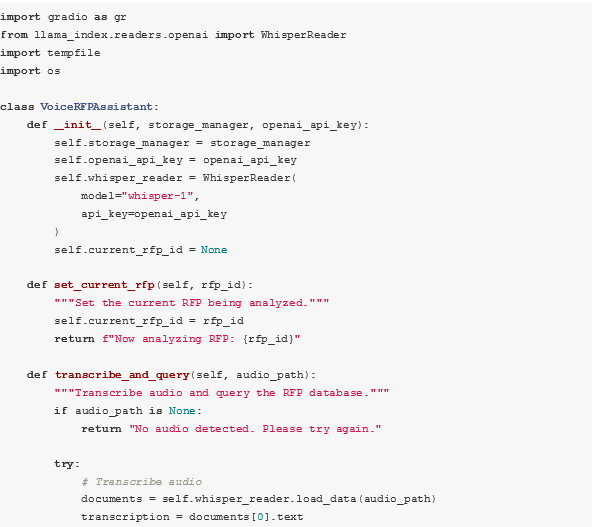
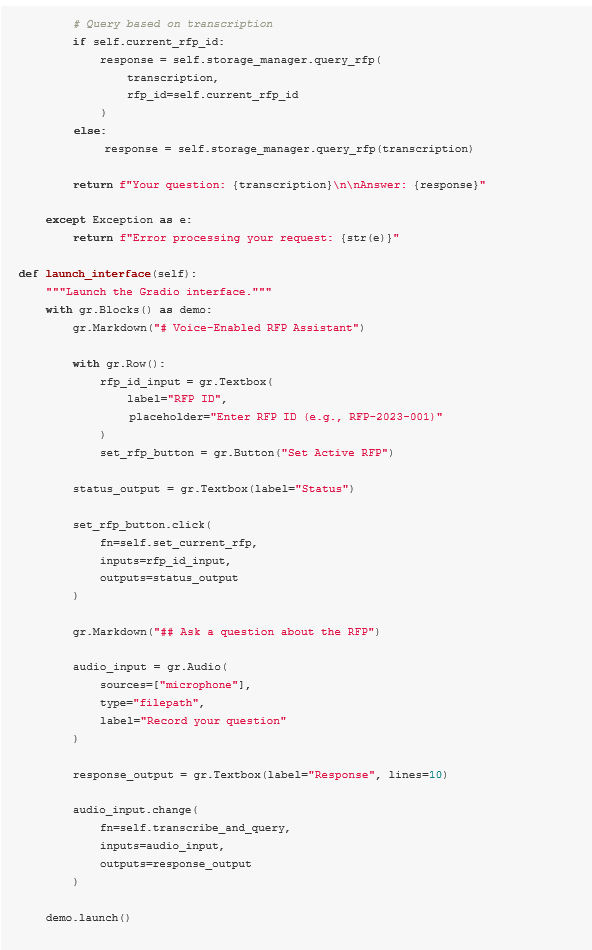
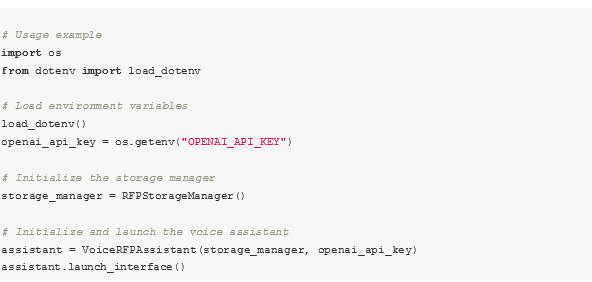
Bringing It All Together: The Complete RFP Agent
The true power of LlamaIndex Workflows emerges when we combine all these components into a comprehensive RFP analysis solution. Let's integrate everything into a cohesive system:
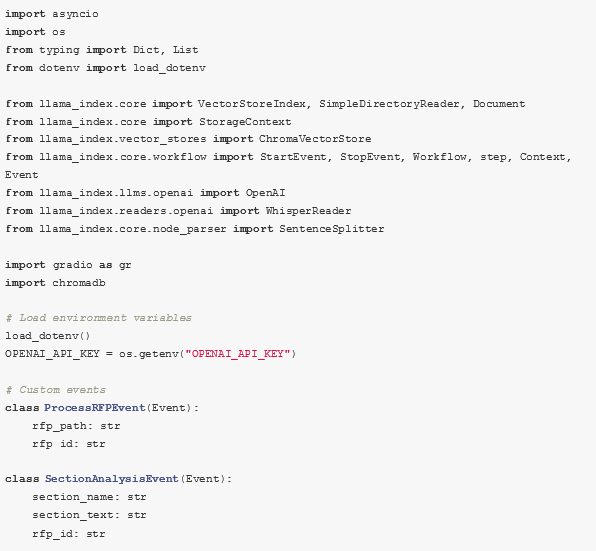
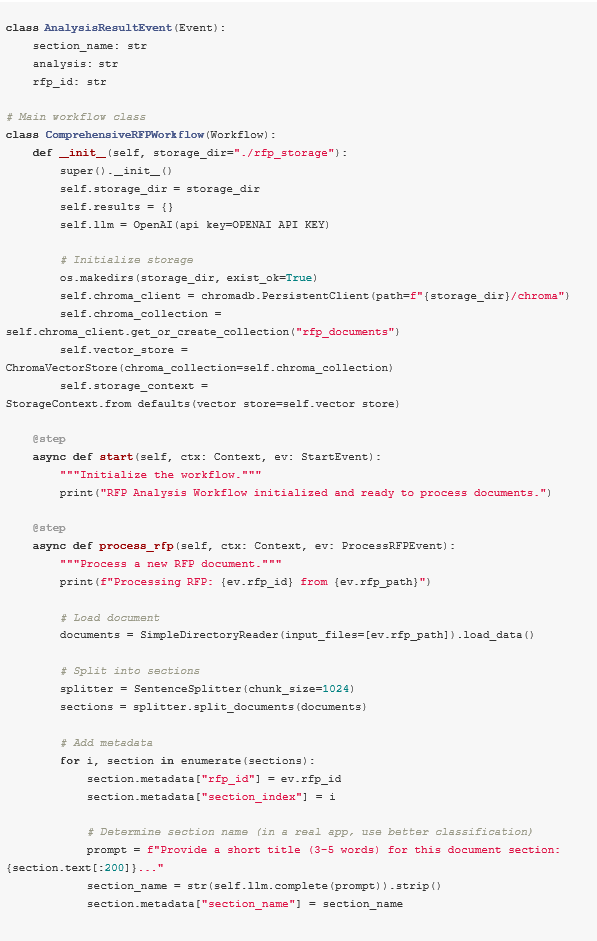
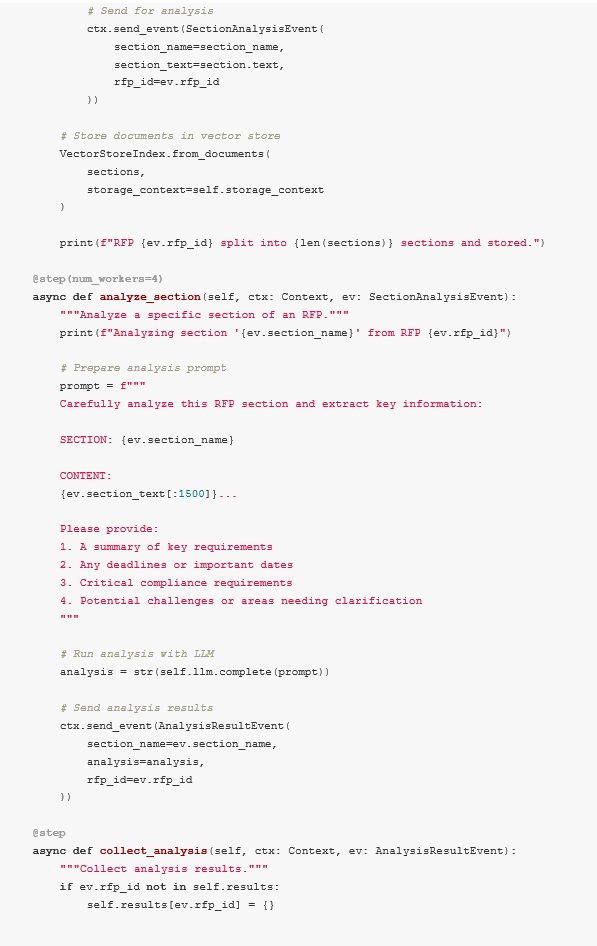
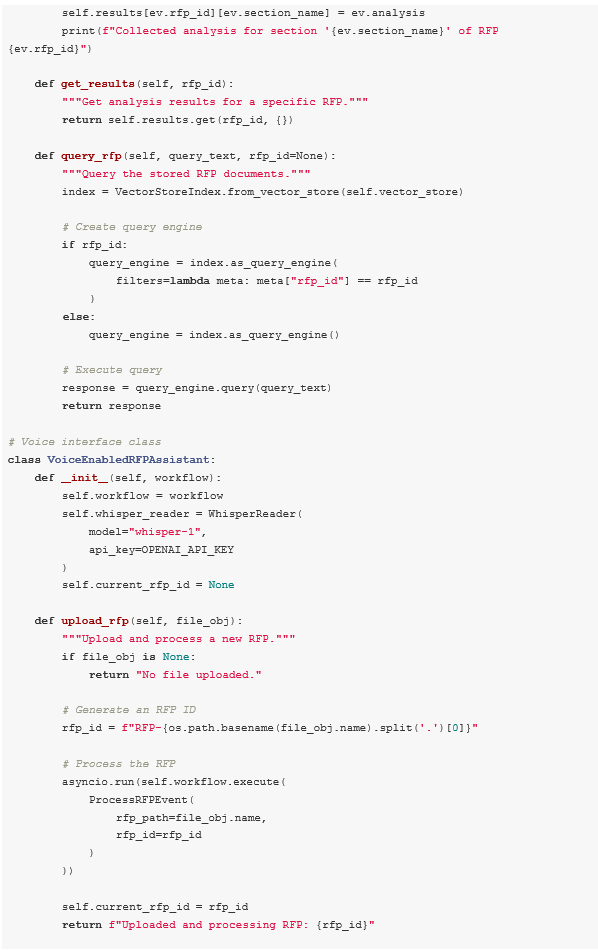
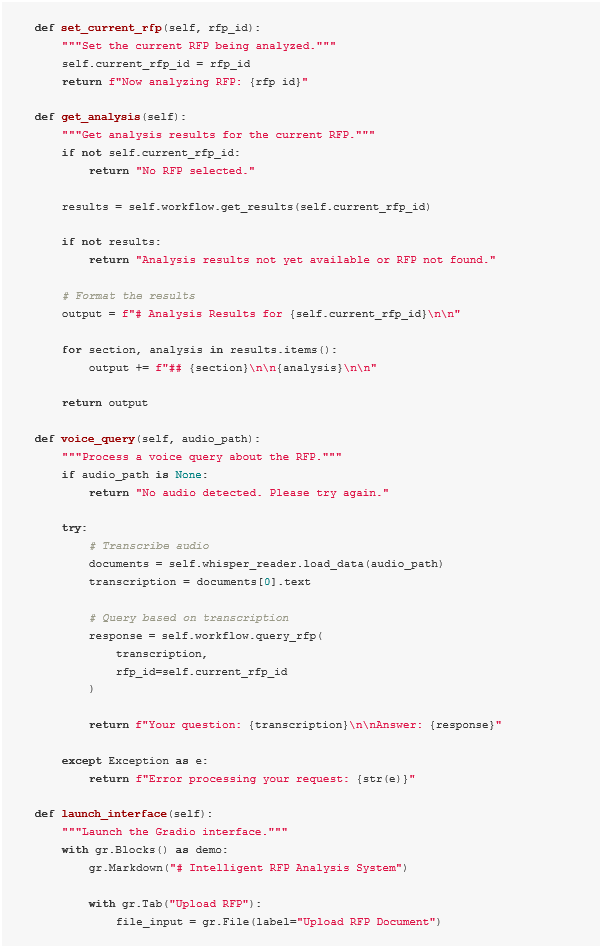
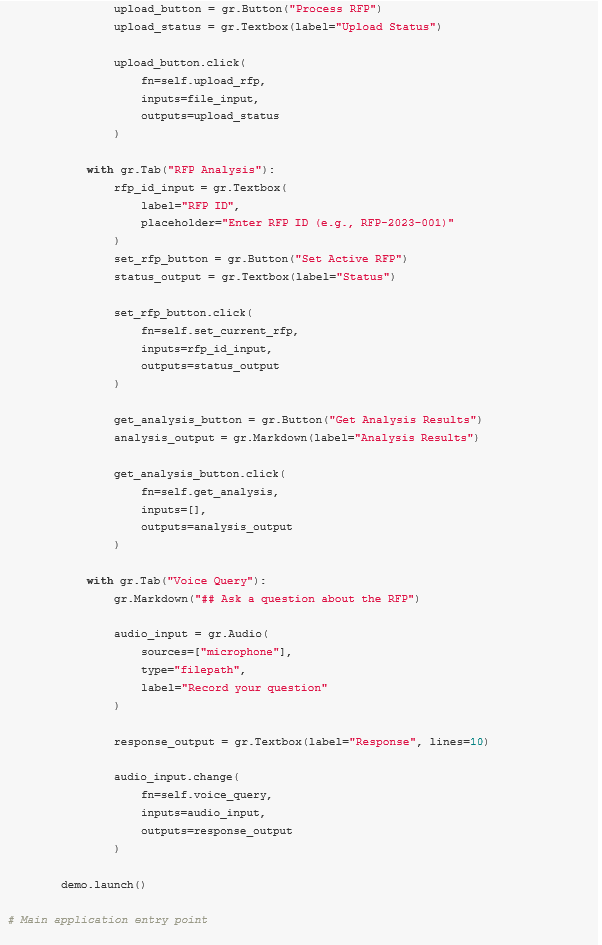

Conclusion: The Power of LlamaIndex Workflows
By leveraging LlamaIndex Workflows, I've transformed a simple document indexing solution into a sophisticated RFP analysis agent. The benefits include:
1. Parallel Processing: Multiple sections of an RFP can be analyzed simultaneously
2. Scalable Architecture: The system can easily scale to handle larger documents and more complex analyses
3. Multimodal Interaction: Users can interact with the system through both text and voice
4. Persistent Storage: Vector databases enable efficient storage and retrieval of document content
5. Event-Driven Design: The workflow approach provides a clean, maintainable architecture
This approach not only makes the system more powerful but also more adaptable to changing requirements. As your needs evolve, you can easily extend the workflow with additional steps, integrate new data sources, or add more sophisticated analysis techniques.
LlamaIndex Workflows provide a powerful framework for building intelligent document processing agents that can handle real-world complexity while maintaining a clean, maintainable architecture.

